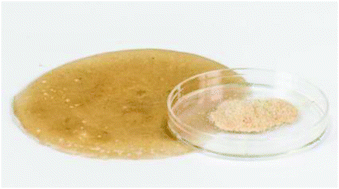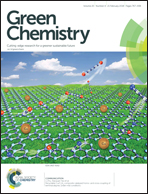Bioplastics from vegetable waste via an eco-friendly water-based process†
Abstract
The valorization of vegetable waste can create opportunities to produce new valuable bioplastics. In this study, a one-step process to fully convert a variety of vegetable waste materials into bioplastic films is reported. The process is carried out in a diluted aqueous HCl solution at room temperature, it is easily scalable, and with no environmental concerns associated with the use of organic or dangerous chemicals. The generated bioplastics are completely biodegradable and environmentally friendly. Freestanding, flexible bioplastic films were obtained from vegetable waste like carrot, parsley, radicchio and cauliflower. They have similar mechanical properties with other bioplastics, like thermoplastic starch, and showed to have little migration in a food simulant. The color and the functional properties (i.e. antioxidant capability) of the starting vegetables are preserved in the bioplastics, thanks to the mild conditions of the fabrication process. The new conversion process allows the blending of the bioplastics with other natural or synthetic polymers, in order to improve their mechanical and gas barrier properties, like the oxygen permability (OP), thus expanding their field of applications. Poly vinyl alcohol (PVA)/carrot bioplastic film showed an OP of 31.2 cm3 μm m−2 day−1 kPa−1, which is lower than the OP for other synthetic films, like high density polyethylene films (HDPE), and similar to edible materials like chitosan.



 Please wait while we load your content...
Please wait while we load your content...